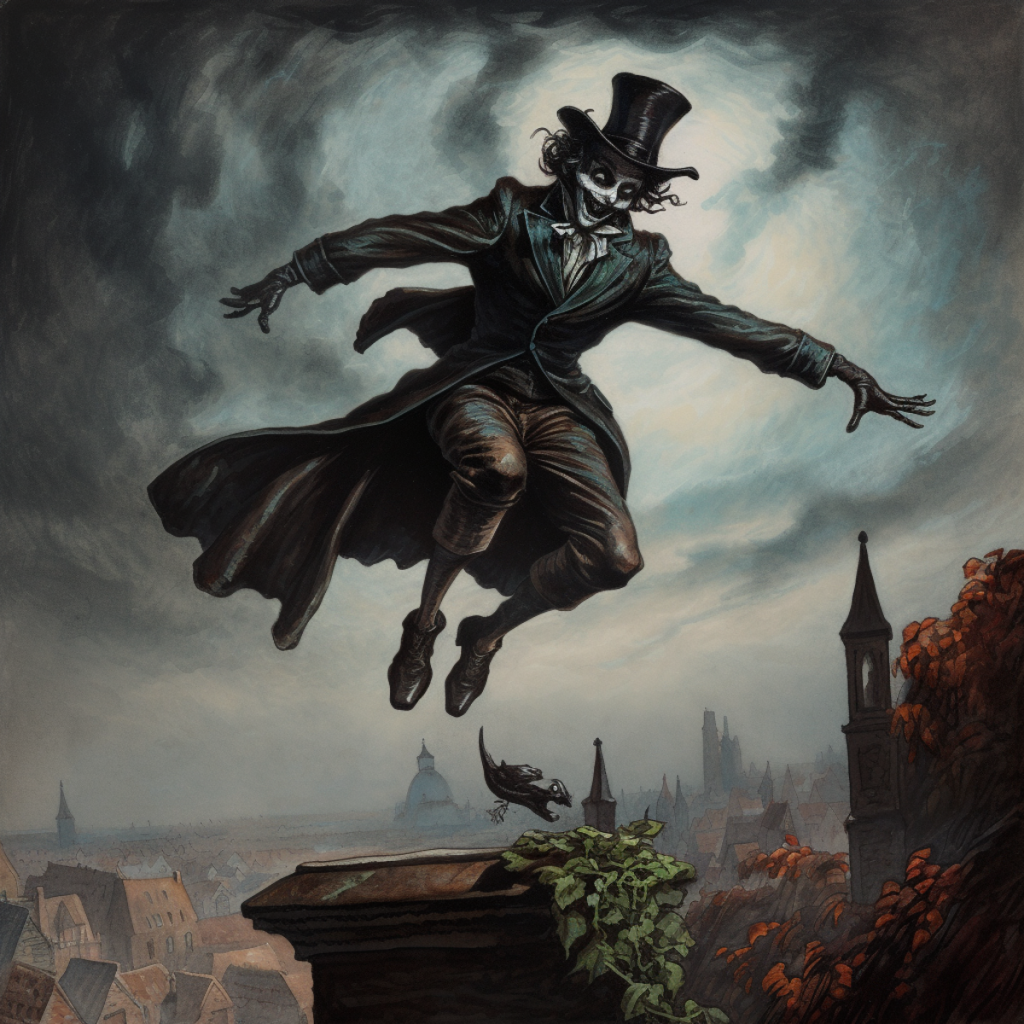Is the Spring Heeled Jack urban legend based on fact or fiction? Were the poorer slums of Victorian London just the target of a widespread hysteria? Or does this maniacal, vicious practical joker’s true story come through in the testimony of the intended victims and other witnesses?
In the Industrial Age of Victorian England, a sinister figure emerged from the foggy alleys of London, haunting the gas-lit streets and igniting the dread of urban legend. Spring Heeled Jack, with his eyes that burned like hellfire and his terrifying cackle that reverberated through the night, became the face of fear in the 1800s. His shadowy presence, characterised by leaps defying gravity and cunning actions, created a terror and curiosity frenzy that endures to this day.
The law enforcement officials who were committed to finding out who was behind the Spring Heeled Jack and his attacks assumed that a local man was behind all the deeds committed in the name of the demonic lunatic. The London police did question a number of local suspects after following the trails and the accounts of multiple eyewitnesses, but it was difficult for them to establish any definitive identifications due to the absence of hard proof and the paranormal elements surrounding the sightings.
Spring Heeled Jack possessed an impressive collection of scare tactics and gimmicks in his inventory. Of them, the most popular and frequently shown in artwork pertaining to the figure is that of a guy dressed in an oilskin, adorned with a black helmet with horns, a pointed snout, metallic claws, red blazing eyes, and a cape. The cryptid was also thought to be able to breathe fire, more accurately it was thought to be spewing blue flame.
On 20 February1938, Jane Alsop, an 18-year-old young girl heard a ringing at her house’s front door, where she discovered a man claiming to be a policeman. He announced that they had captured Spring Heeled Jack and she needed to bring the officer a candle. As Jane approached the policeman with a candle, he threw off his cloak and applied the lighted candle in front of his face, presented the most hideous and frightful appearance and vomited forth a quantity of blue flame from his mouth.
Here the ability of spewing blue flame by the cryptid seemed to be supernatural in nature, but later on this theory of blue fire spewing was proved to be practical by John Farrell, the owner of the Pavilion Theatre. He said to the police that a flame of such description could be made if certain acids are applied to a sponge soaked in spirits of wine. The police did not reveal the name of the acid since they do not want the general people to misuse the information.
According to a report published in The Morning Herald on 27 February 1838, when the door was opened by a young servant boy, he discovered an ugly person with a hand that resembled a claw and clothes embroidered with the letter “W” from the family crest. The family crest suggested that the person was possibly already well-known and belonged to an aristocratic family. This was a reference to Lord Henry Beresford, the 3rd Marquess of Waterford, who had previously had negative encounters with women and the legal system. But due to the absence of hard proof, he could not be confined by the law.
A further example that disproves the Marquess’s claim to be the notorious leaping maniac is the fact that the marquess passed away in 1859 from a horse-riding accident, and the most recent sighting of the Spring Heeled Jack was in 1904.
Many sightings about the Spring Heeled Jack stated that the frantic maniac could leap up to 9ft to 15ft tall, which was humanly impossible. Many people thought the maniac could have installed some kind of special mechanical constructions that let him do the impossible feats.
Up to the end of the 19th century, the notorious Spring Heeled Jack terrorised people. The last time spring-heeled Jack was spotted was at Everton in Liverpool in 1904, where he was sighted skipping from cobblestones to rooftops and back. When a few courageous people attempted to corner him, he disappeared into the darkness and hasn’t been seen since.
Was there truth to the myth of the Spring Heeled Jack? Was he really a mysterious otherworldly figure who haunted Victorian London’s night time streets? Or was he simply a frantic prankster who focused on the suffering of others? Has the Spring Heeled Jack had his last chuckle? Or in the near future, will his terror flare up again?
